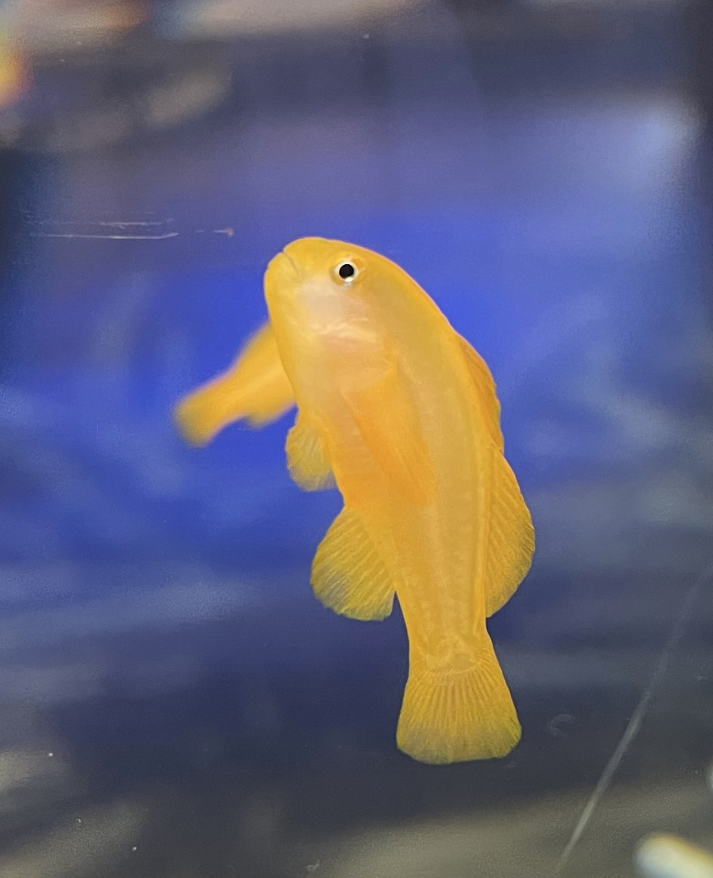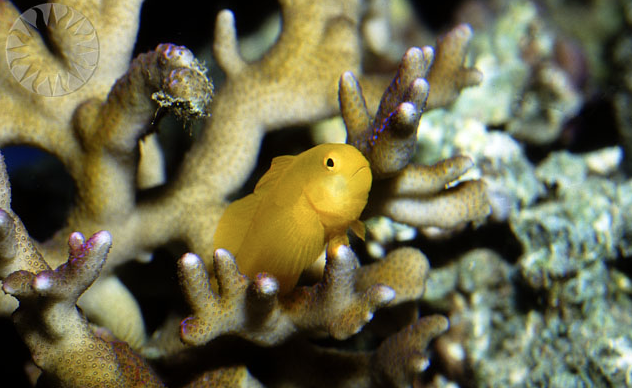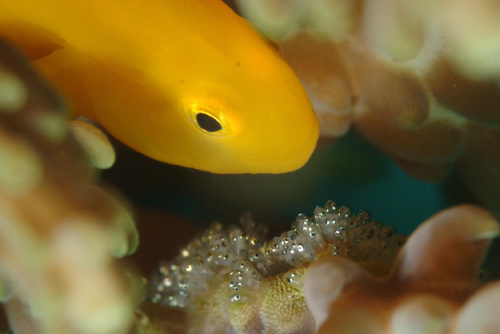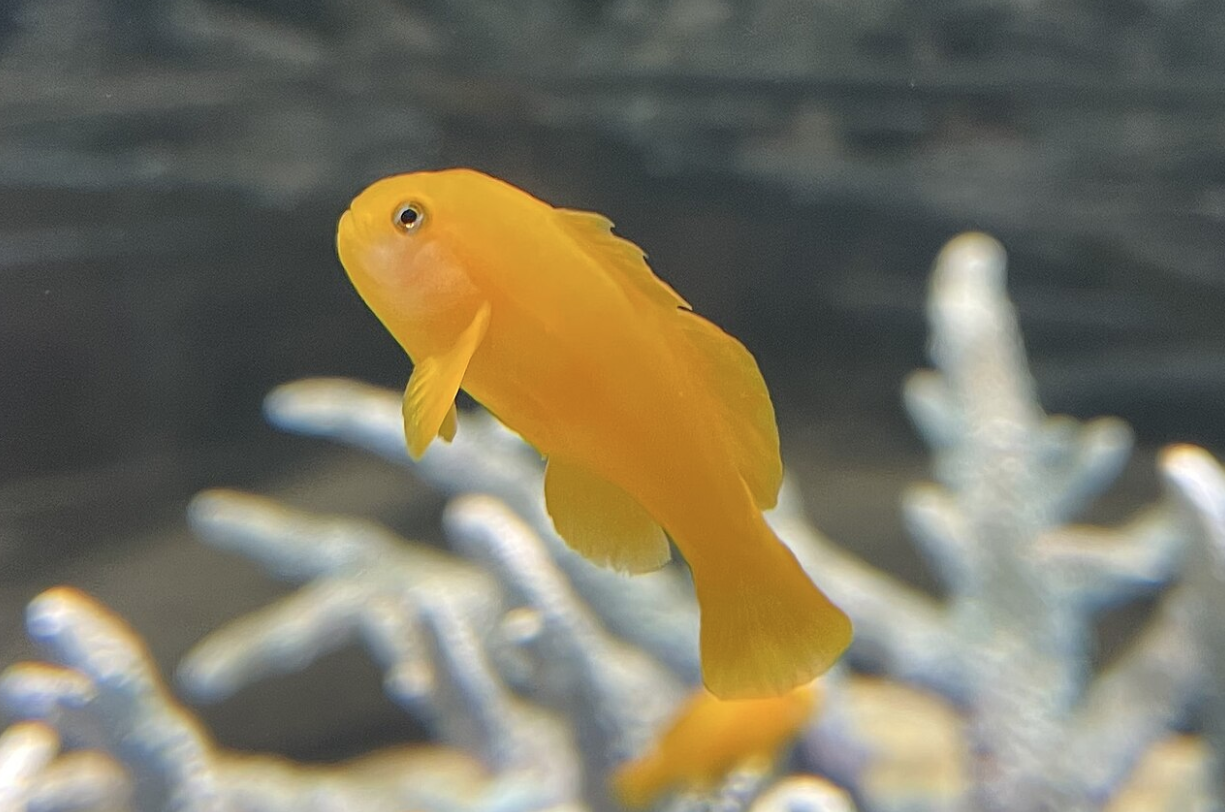I want to take a moment to highlight one of the unsung fishy heroes of the nano reefing world, the humble Yellow Goby. Also known as the Yellow Clown Goby or Okinawa Goby, Gobiodon okinawae is a small, bright yellow goby that lives in the branches of Acropora in the wild, but makes a hardy, entertaining addition to small saltwater aquariums in captivity.
Color
The first plus point is their color as they’re bright yellow, and everyone wants color. Second is their small size. We place a lot of saltwater fish species into nano tanks, but many, even clownfish, just grow too large or need more space to swim up and down and exercise. At an inch-and-a-half-long the yellow goby is tiny, making it suitable for tanks as small as 10 gallons long term, and due to its coral-associated lifestyle, it doesn’t even need to swim a lot or exercise, preferring to spend its days perched on corals or decoration. I’ve never seen one jump out of an uncovered tank either, unlike clowns, and I’ve seen few, if any, with disease.

Behavior
Next is its behavior. Place two into a nano reef and they will squabble, change sex, and form a pair. And whether they’re in the ocean, an aquarium or a nano tank with your face squashed up against the glass, they go about their everyday goby business unaffected, perching, pecking, squabbling, and making short forays to grab food, before returning to perching again, albeit in a different position. And with luck, they’ll even spawn.
Price
And finally, it’s their low price and wide availability. Yellow gobies are the most widely available of the Coral or Clown gobies from the genus Gobiodon, and the lowest priced too. That means that kids can buy them, and you can buy and keep them in a low-cost tank without freaking out about them (like you do with a rare, expensive fish,) or breaking the bank. They offer a lot for the money.

Yellow gobies come from a wide area in the Western Pacific, from eastern Australia to Indonesia and even up as far as Japan. Their niche in the wild is living amongst Acropora, which they cling to with fused pelvic fins. In captivity that enables them to hold vertically to the tank glass when necessary and although pairs of them living in live acros is the icing on the cake of large reef displays, in captivity in the absence of Acropora they will sit on rocks, other species of corals, fake corals or even plastic plants. That’s another factor that makes them so suitable for small tanks, they just aren’t fussy.
So what are the downsides? They have a noxious body slime that protects them from predation, only it won’t ever manifest itself in the home aquarium with similarly sized tankmates, so don’t worry. And they can nip at corals sometimes, but again it’s not damaging and nothing like a nip from an angelfish or a butterflyfish and I consider them almost 100% reef safe. If they spawn on a live acro they may clear a small patch of its polyps. Apart from that they are easy to feed and provide for, and you may appreciate them even more if viewed close-up in a nano tank.

Yellow gobies may just give you the nano goby bug, so also investigate super cute Trimma and Eviota spp. gobies, Gobiosoma, the Neon gobies, or other species of Coral goby like G.histrio or the larger G.citrinus. New species of gobies are being discovered all the time, mainly because they are so tiny and often go unnoticed in nature. But they’re a great family to keep in nano tanks and promise to provide hours of interesting behavior, entertainment and even breeding potential.
Image credits
Totti, CC BY-SA 4.0 https://creativecommons.org/licenses/by-sa/4.0, via Wikimedia Commons
Carl Malamud, CC BY 2.0 https://creativecommons.org/licenses/by/2.0, via Wikimedia Commons




Have you found them to have good lifespans? We had a discussion about them in one of the forums I’m a member of, probably like 8 years ago, but there seemed to be a general consensus which was consistent with my experiences, that wild ones at least, generally didn’t thrive for long periods of time.